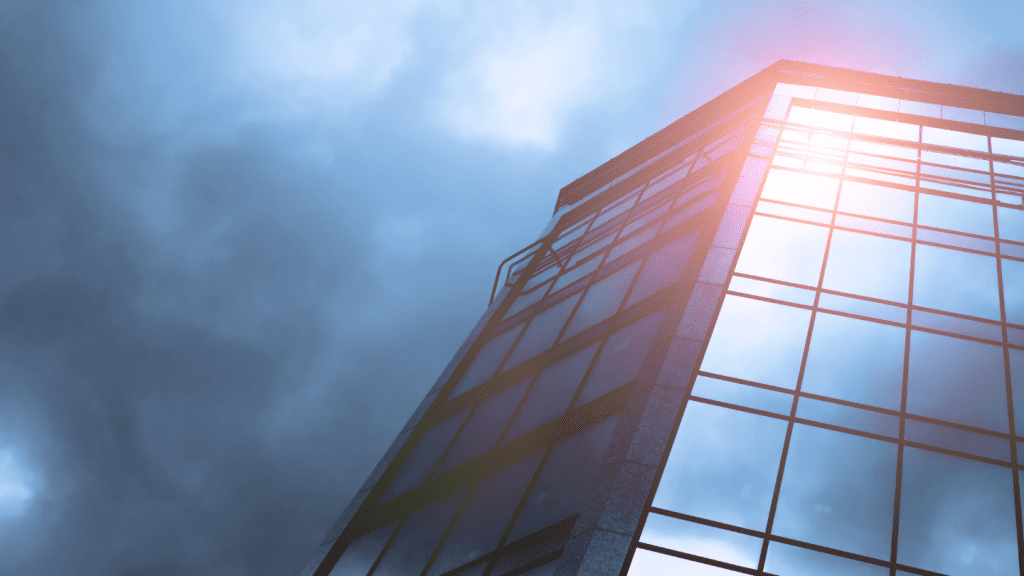In the realm of business, few events can be as devastating as a severe storm. From torrential downpours to howling winds, the forces of nature can wreak havoc on commercial properties. The aftermath often leaves business owners grappling with significant damages, financial losses, and operational disruptions.
United Water Restoration Group would like to go over the most common types of commercial storm damage we see. Remember, every storm is different and can cause different types of damage. If you are experiencing any form of commercial storm damage, our team can assist. Call us at (800) 430-5838 for assistance. During times of emergency, our team can be at your property assisting in under an hour!
Common Types of Commercial Storm Damage
1. Roof Damage
The roof of a commercial building is its first line of defense against the elements. However, it’s also the most vulnerable. Strong winds can tear off shingles, tiles, or even entire sections of the roof. Moreover, accumulated rainwater can lead to pooling, which, if not addressed, can cause leaks or structural damage. It’s crucial for business owners to regularly inspect their roofs, especially after a storm, to identify and rectify any damages.
The average windspeed of a normal thunderstorm is anywhere between 22-55 MPH. During stronger storms like hurricanes, winds can reach over 100 MPH. Over time, your shingles can loosen and cause a vulnerability if not maintained. After any major storm, you should have professionals assess the roof to ensure it is safe, regular maintenance can save you from significant damage!
2. Water Damage
Water damage is arguably the most common aftermath of a storm. Heavy rainfall can lead to flooding, especially in low-lying areas. This can result in significant damage to the building’s foundation, walls, and interior. Moreover, water intrusion can lead to mold growth, which poses health risks and can be expensive to remediate. Commercial storm damage restoration services often prioritize water extraction to prevent further damage and mold growth.
Commercial water damage and commercial storm damage very often go hand and hand. Heavy rainwater can quickly cause leaks or water intrusion around your commercial property.
3. Wind Damage
High-velocity winds can be incredibly destructive. They can shatter windows, rip off signage, and even cause structural damage to buildings. Debris carried by the wind, such as tree branches or unsecured objects, can act as projectiles, causing further damage. After a storm, it’s essential to assess the property for any damages caused by wind and address them promptly.
During certain storms, the wind can be extreme and cause a lot of exterior damage. This damage will typically look like roof damage, which then will cause water damage depending on the nature of the storm. Knowing the difference between wind and water damage can assist in your insurance process as well.
4. Electrical and Equipment Damage
Storms can lead to power outages, electrical surges, and lightning strikes. This can damage electrical systems, appliances, and other equipment crucial for business operations. It’s advisable for businesses to have surge protectors in place and consider backup power solutions to ensure continuity during and after a storm.
5. Structural Damage
In extreme cases, especially during hurricanes or tornadoes, commercial properties can suffer structural damage. This can range from cracked walls and broken pillars to complete building collapse. Such damages not only require extensive repairs but can also pose safety risks to occupants.
If your commercial property has experienced structural damage, you should vacate the area until professional assistance arrives. Structural damage can cause the building to become structurally unsound and hazardous.
6. Landscape Damage
While the primary concern is often the building itself, the surrounding landscape can also suffer. Fallen trees, damaged parking lots, and eroded land can impact the aesthetics and functionality of a commercial property. It’s essential to address these issues, as they can affect the business’s image and customer accessibility.
Preparation and Mitigation
Understanding the types of commercial storm damage is the first step. The next is preparation. Here are some proactive measures businesses can take:
Regular Inspections: Periodically inspect the property, especially the roof and drainage systems, to ensure they are in good condition.
Secure Loose Objects: Ensure that outdoor furniture, signage, and other objects are securely anchored to prevent them from becoming windborne debris.
Install Storm Shutters: These can protect windows from shattering due to high winds or flying debris.
Backup Systems: Consider investing in backup generators and data recovery systems to ensure business continuity.
Insurance: Ensure that the business is adequately insured against storm damages. Regularly review the policy to ensure it covers all potential risks.
Commercial Storm Damage Restoration
If your commercial property has experienced storm damage and needs restoration, United Water Restoration Group can help! Our team of experts can assist you through every step of the process and help return your commercial property back to a state of normalcy!
Whether you are dealing with wind or water damage, our team can help. We can help get your commercial property back up to 100% using our commercial storm damage restoration services!





